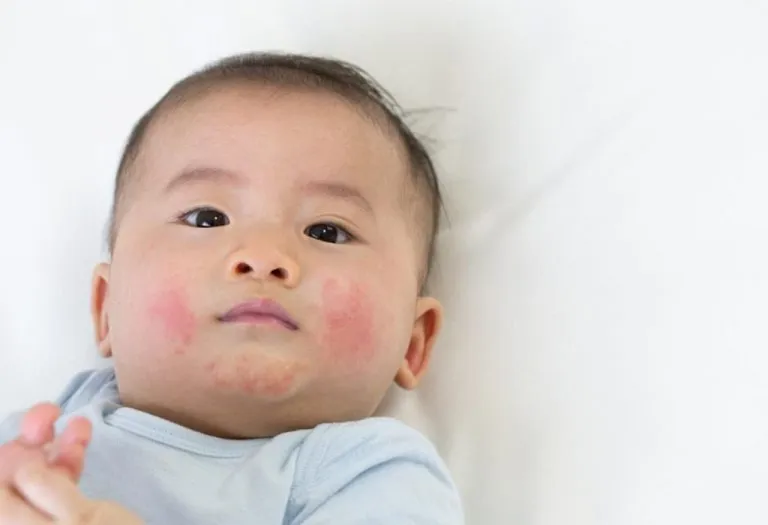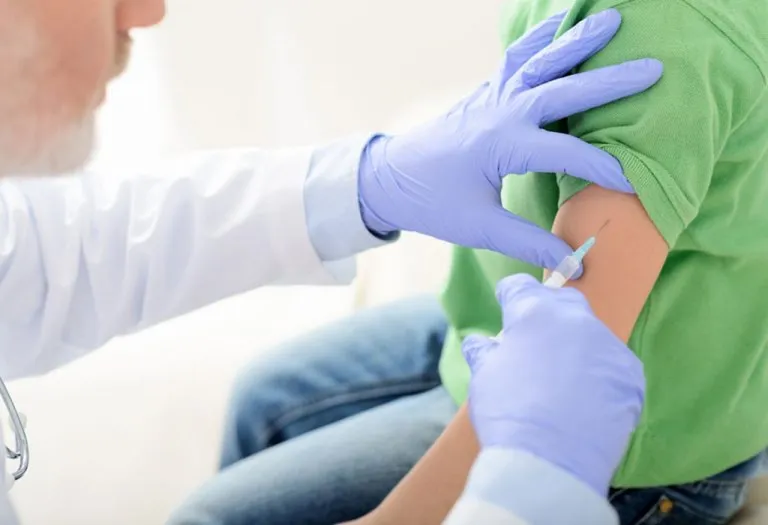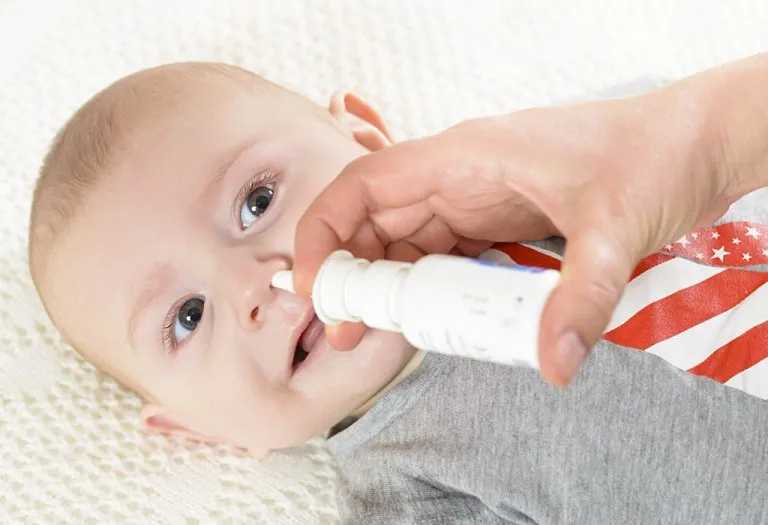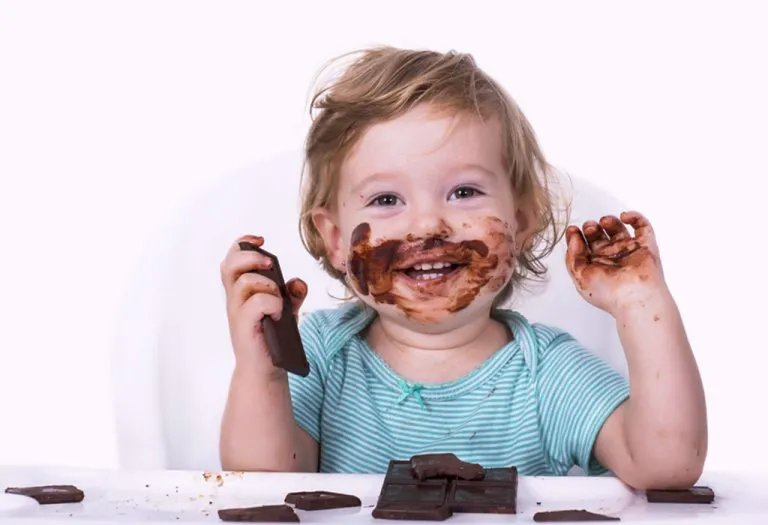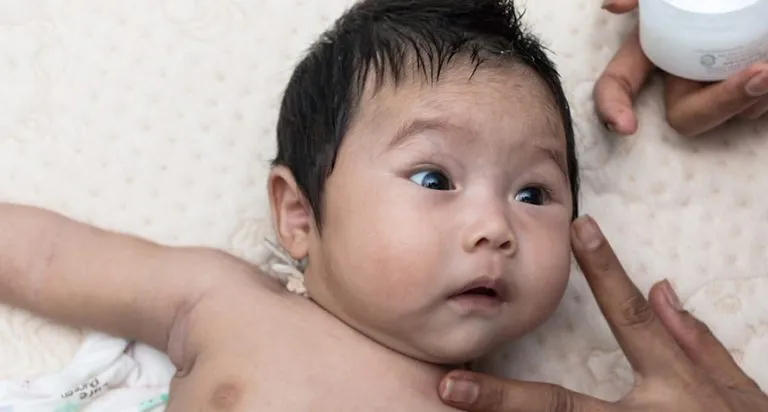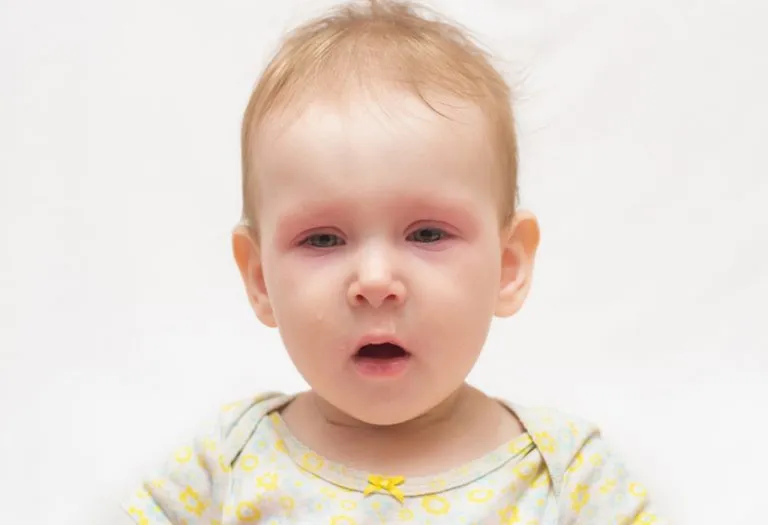Teething Rash – Causes, Symptoms, and Remedies

- What Is a Teething Rash?
- Causes of Drool Rash in Infants
- Teething Rash Pictures
- Signs of Teething Rash
- Difference Between Drool Rash and Eczema
- How to Treat Drool Rash at Home?
- Prevention of Teething Rash in Babies
- When Should You Call the Doctor?
- FAQs
Has your child been drooling excessively? Can you spot reddish marks on his chin area and near the mouth? Teething drool rash or dribble rash is commonly seen in babies when they drool a lot. There are a few reasons as to why babies drool a lot. One of the most common causes is teething. Drool rash in babies due to consistent drooling can be irritating for both the child and parents as the mouth produces saliva to soothe the irritation as teeth push through the gums. Let’s find out more about what is a teething rash and how you can deal with it.
What Is a Teething Rash?
A teething rash is another name that is given to a drool rash, which happens when a baby is teething. Most babies start teething when they are about six months old, and you can notice how it causes the baby to drool (1). Along with teething rash on the baby’s face, cheeks, and neck, you can also note other signs like sensitive gums, chewing on hard things, and irritability (2).
Causes of Drool Rash in Infants
Drooling might seem all right, but it is not always okay because drool has digestive enzymes, which affect the sensitive skin of the baby. The baby’s skin reacts to the liquid, and it forms bumpy rashes that can irritate the little one and can also cause an infection (3). It is always better to take precautionary methods and help your little one through this process.
Teething Rash Pictures
Here are some pictures of baby drool rash so you can understand what it looks like.
Signs of Teething Rash
Signs and symptoms of baby teething rash on the face include (4):
- Flat or slightly raised red patches with tiny bumps
- Chapped or dry skin
- Red or blotchy skin
Difference Between Drool Rash and Eczema
Eczema is an umbrella term that includes contact dermatitis and atopic dermatitis. Let’s uncover the popular opinion over drool rash vs eczema.
1. Contact Dermatitis
Contact dermatitis is an eczema type that is caused by an allergic reaction when the baby’s skin comes into contact with an irritant. Teething drool rash is a case of contact dermatitis where the contact surface is the baby’s skin, and the irritant is drool (5).
2. Atopic Dermatitis
One of the primary causes of atopic dermatitis is a genetic predisposition, which is either caused by food allergies, hay fever, asthma, or extreme weather (6). Atopic dermatitis is not necessarily the reason for skin contact.
How to Treat Drool Rash at Home?

Yes, a slobber rash or a drool rash can be treated at home using simple ingredients. You don’t need high-end products; just a simple drool rash home remedy. Let’s try some.
- You can keep a small, soft, absorbent pad under his face while he is sleeping. This will absorb the moisture and help to a large extent to avoid rashes. When your baby wakes up, during intervals, you can take the opportunity to clean the drool and replace the sheet, if necessary.
- You can also mix a little aloe vera with petroleum jelly. Apply this to the rashes, and it will help in controlling the itchy feeling.
- Coconut oil also helps in skin care. It has anti-fungal and anti-microbial elements that will fight the bacteria in the rash. The oil forms a protective sheet over the rash as well.
- You can wet a soft washcloth and keep it in the refrigerator for an hour. Take it out and ask your baby to chew on the cloth. This can relieve the pain for some time, at least.
- Sometimes, baby drooling happens because of a sore throat. You can try using a cool-mist humidifier, which will keep the surrounding air a little moist. This will help the baby feel relieved from a dry and itchy throat.
- If your little one is above six months, then you can try giving him some cold water or juice that is diluted. You can do this between meal times to make sure that his throat is not too dry.
- Rub your little one’s gums gently with clean hands; the pressure can relieve him from the pain.
- If your baby has started eating solid food, then you can try giving him some chewy vegetables to gnaw on. Just make sure that they are cut properly and do not make the baby choke.
Prevention of Teething Rash in Babies
The drool rash can get worse when the baby keeps rubbing or itching the rash for some relief. When the baby rubs these rashes with unclean hands, the bacteria that is present in the baby’s hands enter the cracks and make the condition worse.
- Wipe the Drool Off: Gently wipe the baby drool that forms on the baby’s chin and chest area. Make sure that you don’t rub it too hard. Use a tissue or a soft towel to clean the area before it causes a drool rash on his neck, face, and other areas.
- Use Baby Moisturisers: Using a little moisturiser around the area where your baby has been drooling helps to prevent the rash from spreading. It also reduces the feeling of irritation that the child is facing. You can use petroleum jelly to do this. You can also add a little aloe vera to petroleum jelly and apply it to the affected area.
- Use Baby Bibs: This is the safest and probably the most effective one to avoid rashes in the neck and chest area. The soft protective layer prevents the baby’s dribbles from settling on the skin and helps protect the baby from any rash.
- Mild Baby Wash: Sometimes, these rashes tend to spread to the rest of the skin. To avoid this, you can choose to use an unscented baby wash to clean the area and prevent rashes.

When Should You Call the Doctor?
At times, the rashes can get complicated as they spread, and if the baby tends to rub it a lot, it will only get worse. This is not safe at all. You need to meet your paediatrician in case the rashes spread a lot. If the rash gets too infected, it can even start to smell quite bad. This is again a sign that you have to call the doctor for some baby drool rash treatment. Don’t let your child go through the pain. When the baby is too uncomfortable and is struggling because of these rashes, it is better to do something and get rid of it rather than wait for it to heal on its own. One thing you need to avoid during your baby’s teething process is teething medications. This is because they have a pain reliever called benzocaine, which can lead to health issues as it reduces the amount of oxygen in the blood.
FAQs
1. Can a mouth drool cause a rash?
Yes, a teething drool can irritate the baby’s skin, causing a rash.
2. At what age does drool rash usually occur in babies?
Drool rash usually appears when during infancy till toddlerhood. It is also very excessively seen from 3 to 6 months when babies start teething and start having drool and saliva bubbles (7).
3. Does a teething drool rash hurt a child?
Skin’s consistent exposure to excess saliva causes irritation or itching, which can be uncomfortable for babies. However, it is not life-threatening.
Teething is a natural process that every baby experiences. It is a positive sign of growth, but there are a few things, like drool and infections, that come along with it. You don’t need to panic as these problems can be controlled. Just be sure to take the essential steps to help your baby through the process using the various available home remedies. However, if things get uncontrollable, and if you see the signs getting worse, instead of waiting for the rashes to heal, reach out to your child’s paediatrician and discuss the problem with them.
References/Resources:
1. American Dental Association – Teething
2. American Academy of Pediatrics – Symptoms Associated With Infant Teething: A Prospective Study
3. Children’s Hospital Los Angeles – Your Infant is Teething: Know the Signs and Symptoms
4. Scripps – Baby’s Drool Rash: How to Treat and Prevent It
5. National Eczema Association – Contact Dermatitis
6. National Eczema Association – Atopic Dermatitis in Children
7. American Academy of Pediatrics – Drooling and Your Baby
Also Read:
Teething Fever in Infants
Baby Teething Biscuits
Order of Teething in Babies
Teething and Vomiting in Babies
Baby Teething Remedies that Work







